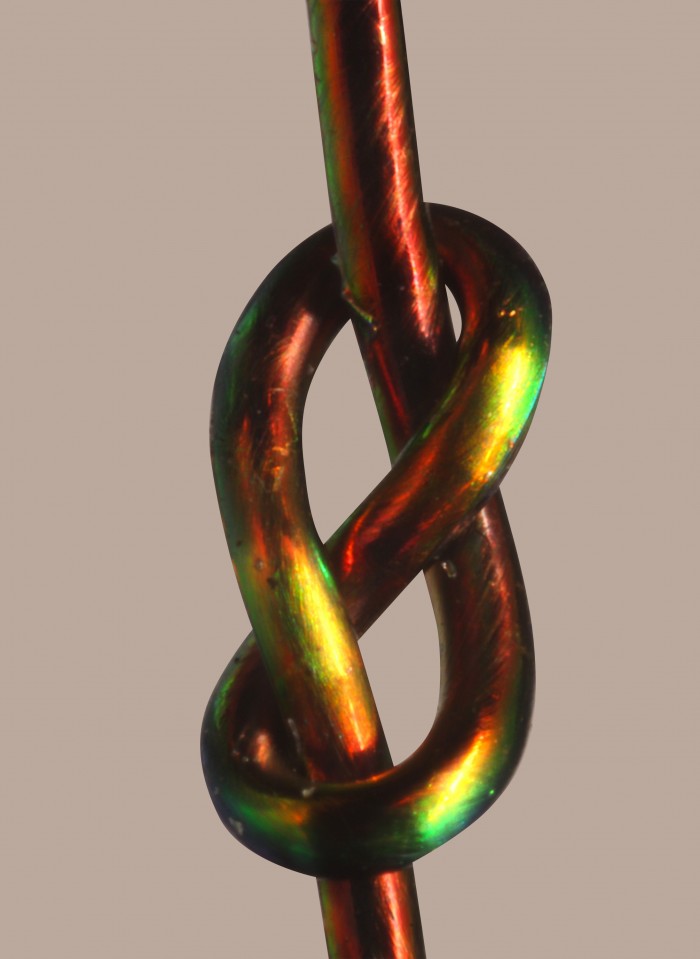Knotty by nature

Any seasoned sailor knows that one type of knot will secure a sheet to a headsail, while another is better for hitching a boat to a piling. But what exactly makes one knot more stable than another was not well understood—until associate professor of mathematics Jörn Dunkel created a mathematical model to study them.
Dunkel teamed up with Mathias Kolle, an associate professor of mechanical engineering, whose group had engineered stretchable fibers that change color in response to strain or pressure. His team used Kolle’s fibers to tie a variety of knots, including trefoils and figure-eights, photographing each fiber and noting where and when it changed color, along with the forces applied as it was pulled tight.
Using this data, they calibrated a model simulating the distribution of stress in knots. Then they simulated more complicated knots and drew up simple diagrams to represent them.
In comparing diagrams for the common granny, reef, thief, and grief knots, along with more complicated ones such as the carrick, zeppelin, and Alpine butterfly, the researchers identified some general rules. Basically, a knot is stronger if it has more strand crossings, as well as more “twist fluctuations”—changes in the direction each segment of a strand rotates as a knot is tightened. These changes create friction that promotes stability.
They also found that a knot can be made stronger if it has more “circulations”—regions where two parallel strands loop against each other in opposite directions.
“If you take a family of similar knots from which empirical knowledge singles one out as ‘the best,’ now we can say why it might deserve this distinction,” says Kolle. “We can play knots against each other for uses in suturing, sailing, climbing, and construction.”
Keep Reading
Most Popular
Large language models can do jaw-dropping things. But nobody knows exactly why.
And that's a problem. Figuring it out is one of the biggest scientific puzzles of our time and a crucial step towards controlling more powerful future models.
The problem with plug-in hybrids? Their drivers.
Plug-in hybrids are often sold as a transition to EVs, but new data from Europe shows we’re still underestimating the emissions they produce.
Google DeepMind’s new generative model makes Super Mario–like games from scratch
Genie learns how to control games by watching hours and hours of video. It could help train next-gen robots too.
How scientists traced a mysterious covid case back to six toilets
When wastewater surveillance turns into a hunt for a single infected individual, the ethics get tricky.
Stay connected
Get the latest updates from
MIT Technology Review
Discover special offers, top stories, upcoming events, and more.